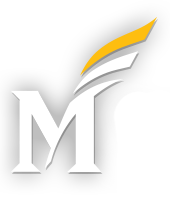An extra big thanks goes out to RA Preston Haas for giving this presentation! He has written our follow-up post for this week.
I would like to start by saying it was great to see all of you who were able to come to our meeting this week, and thank you so much for the opportunity to speak a bit about language archiving and how it fits into the larger picture of documenting low-resource and minoritized languages. If you weren’t able to come to this talk, no worries! Here will be a brief summary of the topics mentioned and any extra readings that were brought up during the presentation. Equally, you will be able to find a recording of our Zoom lab meeting both on this website and on our Language Documentation Blackboard page.
The topics covered in this presentation consisted of 1) defining (traditional) language archiving, 2) discussing four distinct periods in the history of language archiving, 3) engaging the ways in which we should archive and some archiving/archivist recommendations, and 4) taking a look at a radical model for endangered language archiving, C.B.L.A. (Community-Based Language Archiving, Linn 2014).
Language archiving, as we traditionally think of it, is defined by Linn (2014) as «Any holdings of primary and secondary language documentation materials by memory institutions such as archives, museums, libraries, and special collections within libraries.» This kind of archiving by way of physical repositories housed in some space is what comes readily to mind for many people when thinking of archiving. However, technological advancements and notions of indigenous rights in research have highlighted the deficiencies of this strategy.
Archiving has historically followed a quite linear path to the present, adjusting and expanding slowly to incorporate new methods of archiving, a refined attention to language endangerment, evaluations of systematicity and sustainability, and developments in the ethics of research with Native communities. Henke & Berez-Kroeker (2016) delineates this path into four sections: Early Ling-1990: Brick and Mortar Archives, 1990s: a new focus on language disappearance, Early 21st Century: Technology and Funding, and Current: Research Ethics and Indigenous rights. Throughout the talk, we continually critique and reform our conceptions of the most effective and beneficial archiving methods.
After a refresher of the history, we continued on to talk about the roles and duties of an archiver which involves 1) appraisal, 2) organization, and 3) description. Then a short list of archiving recommendations is given (reproduced below).
1. Go digital
2. Imagine the digital archive to subsume the role of published text (Evans & Dench 2006:24)
3. Continually seek to refine efficiency and sustainability requirements, especially when involving technology. (see Commission on Preservation and Access and the Research Libraries Group 1994, OAIS, ELAN, E-MELD)
4. Open Source; not only to unify linguistics-based tools, but also for data usage by the community, other linguists, and interdisciplinarily. (Bird and Simons 2003)
5. Collect proper metadata on both the documentation/digitization process but also on the linguistic content and its featured speakers. (E-MELD)
6. Practice appropriate stewardship over American Indian archival material (Golla 1995). This means involving the Indigenous community in decisions about privacy, security, distribution, and public permission.
We finished off taking a look at a model for language archiving that incorporates many of our critiques of former systems and is also aligned with our contemporary focus on indigenous sovereignty. This model is known as Community-Based Language Archiving (Linn 2014) and is the natural result of its predecessor Community-Based Language Research (Czaykowska-Higgins 2009). In both of these, language research (and archiving) is conducted for, with and by the community within which the product is taking place. This is a progressive shift towards conducting research more equitably and sustainably while also recognizing the possibility for Language to serve as a conduit of social change. Under a CBLA model, there is decentralized curation (expansion of the role of archiver), radical user orientation (more inclusive, user-friendly systems that have wider access), and contextualization of data (metadata of the documentation and archiving processes, data content, speaker/community demographics, and any other data that either the speaker or the linguist sees fit). Truly, the most vital facet of this model is that the community is involved in every step of the documentation and archiving process and hold equal decision-making power with the linguist.
For the last section, we illuminated the theme that archiving and documentation should not be thought of as two separate endeavors but as two sides of the same coin. As such, the metrics by which we judge the success of archiving are the very same for documentation on the whole. This has grown to be what Nathan (2004) calls ‘Archivism’: «quantifiable properties such as recording hours, data volume, and file parameters, and technical desiderata like ‘archival quality’ and ‘portability’ have become commonplace reference points in assessing the aims and outcomes of language documentation» (as in Linn 2014).
If you are interested in any of the topics in the video or written here, or if you want to find out more about Indigenous language research, the decolonization of research, or endangered language archiving, feel free to reach out any time. My Mason email is Phaas4@gmu.edu
Supplementary Reading:
Czaykowska-Higgins, Ewa. 2009. Research models, community engagement, and linguistic fieldwork: Reflections on working within Canadian Indigenous communities. Language Documentation & Conservation 3 (1), 15-50.
Henke, Ryan E.; Berez-Kroeker, Andrea L. 2016. A brief history of archiving in language documentation, with an annotated bibliography. Language Documentation and Conservation 10 , 411-457.
Linn, Mary S. 2014. Living archives: A community-based language archive model. In David Nathan & Peter K. Austin (eds.) Language Documentation and Description 12: Special Issue on Language Documentation and Archiving, 53–67. London: SOAS.
Messing, Jacqueline; Nava Nava, Refugio. 2016. Language acquisition, shift, and revitalization processes in Latin America and the Caribbean. Indigenous language revitalization in the Americas, 88-108. Routledge.

